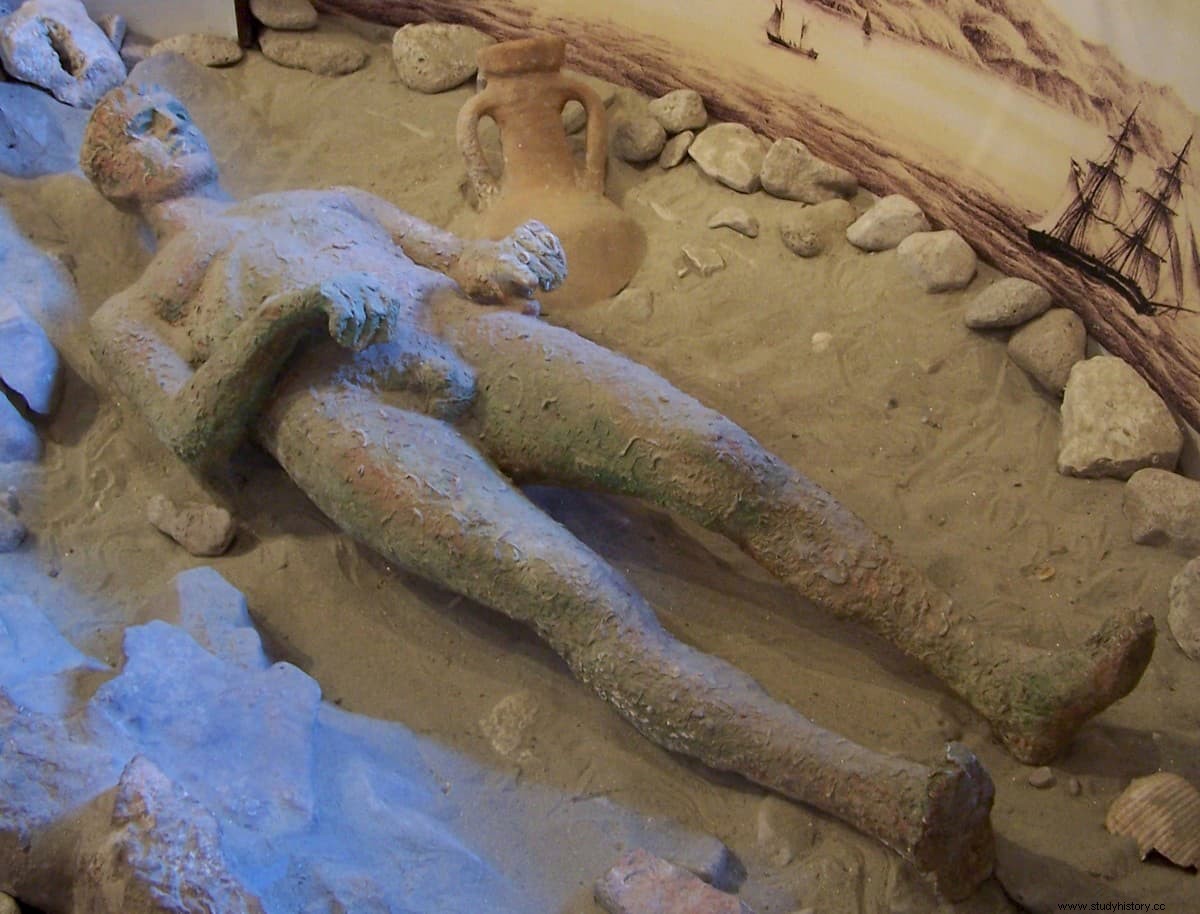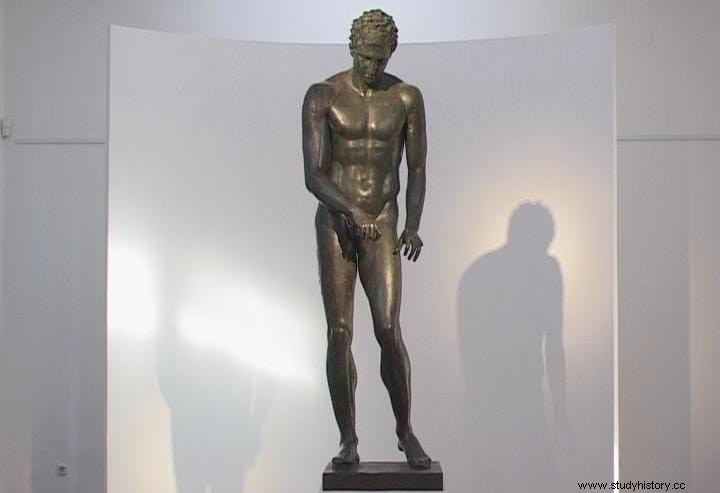In 1996 a Belgian tourist enjoying his vacation on the coast of Croatia made a surprising discovery. His name was René Wouters (he passed away in 2012) and he was scuba diving near the islet of Vele Orjule, southeast of the island of Lussino (Lošinj) and north of the Adriatic coast.
At a depth of about 150 feet something caught his attention on the sandy soil between two rocks. When he got closer he saw that it was a statue, probably very old. However, he did not report the finding to him immediately.
Or at least that is what can be deduced from the fact that the Croatian government did not start the recovery work until two years later, in 1998. In any case, when the work began, Wouters accompanied the team of divers in person of the Ministry of Culture and the Zadar Archaeological Museum who brought the statue to the surface on April 27, 1999.
Today it is known as the Croatian Apoxyomenos, and it is the one that is in the best condition of the eight that have been preserved from antiquity. An apoxyomeno (Ancient Greek scraper ) is a sculpture that represents an athlete wiping the dust and sweat off his body with an instrument called estrigil , a long, thin, curved metal scraper.

For seven years the statue underwent a restoration process, without using chemical products, to remove the marine organisms adhered to the bronze, which had remained in good condition despite being under water for more than two millennia.
Inside the hollow bronze of the statue were found fragments of wood, branches, fruit seeds, pitted olives and cherries, and even the nest of a rodent that must have nested there at some point before falling into the sea. And it is that, although it is not usual, we have already seen on other occasions how bronze objects bring unsuspected surprises from time to time.
Radiocarbon dating of that organic matter allowed the researchers to conclude that the statue had fallen to the seafloor sometime between 20 B.C. and 110 AD. It would thus be a Hellenistic copy of an ancient model from the 4th century BC.
The base on which the sculpture was originally placed, complete and unbroken, as well as remains of amphorae, was also found in the area of the discovery. But nothing that could indicate a shipwreck, so it is thought that the Apoxyomenos was thrown intentionally, perhaps from a Roman merchant ship, for unknown reasons.

The statue is 1.92 meters high and today it is displayed on its original 10-centimetre-high base, which has the typical classical decoration of swastikas and other geometric motifs. The name of its creator is unknown, but historians believe that both its beauty and technical styling indicate that the creator of the original model was a skilled artist.
Since the strigil has not been preserved, some authors question whether it is an apoxyomene and, based on the muscular development of the left shoulder, they suggest that he would actually be a fighter cleaning the scraping object and not his body.
In 2009, the construction of the Apoxyomenos Museum began on the island of Lošinj, where the sculpture is now exhibited after having been exhibited in numerous international museums such as the Palazzo Medici Ricardi in Florence, the British Museum, the Louvre or the J.Paul Getty from Los Angeles.
